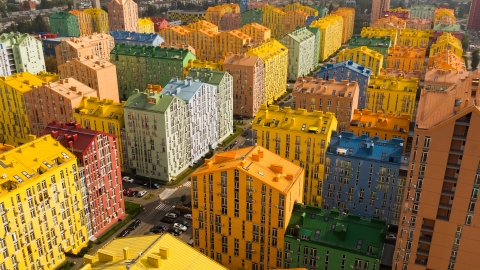Vietnam
Vietnam is one of the countries that celebrate the Mid-Autumn Festival in Asia. Mid-Autumn Festival in Vietnam is a big holiday associated with children. On this occasion, families display trays of five fruits to worship the full moon, then gather to break the cake and organize a lantern procession. This holiday in Vietnam is not only a family reunion but also considered a children's holiday.
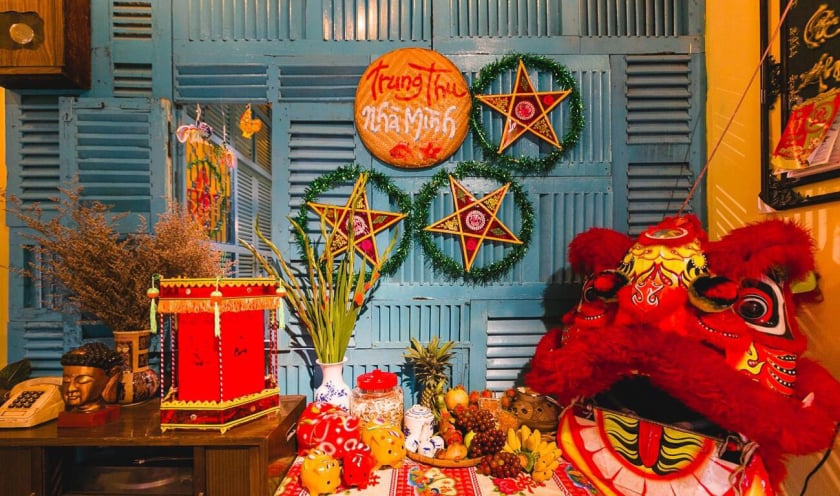
Vietnam is one of the countries that celebrate the Mid-Autumn Festival in Asia.
Traditionally, parents will buy gifts and folk toys such as star lanterns, masks, drums, lions... to give to their children to go out and carry lanterns under the moon. These days, moon cakes are an indispensable spice. Baked cakes and sticky rice cakes are also a special feature of the Mid-Autumn Festival.
Vietnam also focuses on the full moon offering tray. The five-fruit tray has five types of fruit, symbolizing the five elements. In addition, there will be traditional moon cakes and moon cakes with many flavors symbolizing the earth and sky.
Korea
The Mid-Autumn Festival in Korea is called Chuseok (meaning autumn night, the most beautiful moonlit night of the year) and will last for 3 days (from August 14 to 16 of the lunar calendar). On this occasion, Korean people will return to their hometowns, families will gather to worship, visit graves, and give gifts to each other. They thank their ancestors and pray for a bountiful harvest and a prosperous life.
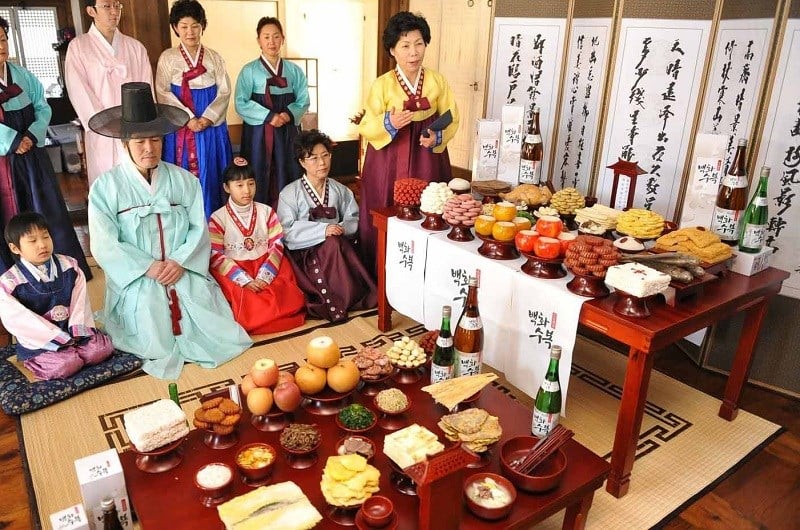
The Mid-Autumn Festival in Korea is called Chuseok (meaning autumn night, the most beautiful moonlit night of the year).
Koreans have their own cake for this occasion called Songpyeon. This cake is shaped like a crescent moon or half moon, not square or round like other countries. The cake is made from rice flour, mung beans, sugar and pine needles. The colors of the cake are diverse and beautiful. People will wear Hanbok, eat traditional dishes such as songpyeon, pan-fried meatballs, mung bean cakes and drink sindoju wine...
China
Mid-Autumn Festival is one of the four major holidays of the Chinese people, an occasion for family members to reunite and have a “reunion” meal. According to legend, Chinese people often drink wine and watch the moon on this holiday, so it is also called the Moon-Viewing Festival. On the night of the Mid-Autumn Festival, besides eating and chatting, Chinese people also have other customs such as worshiping the moon, releasing flower lanterns, lighting paper lanterns, solving riddles, dancing lions, etc.

The Mid-Autumn Festival in China is also known as the Moon-Viewing Festival.
The traditional food during the Mid-Autumn Festival in China is mooncakes, which are round in shape and symbolize completeness and fullness. Chinese mooncakes are very similar to Vietnamese ones, with a thin crust and fillings of lotus seeds, mung beans, salted eggs, etc. In each region of China, this traditional cake will have variations depending on taste.
Activities held on this special occasion include writing good wishes on lanterns for health, good harvests, marriage, love, education... In some rural areas, local people light up lanterns to fly into the sky or release them on the river hoping that their wishes will come true.
Japan
The Mid-Autumn Festival in Japan is called Tsukimi or Otsukimi, meaning moon viewing. This tradition was introduced to Japan 1,000 years ago. Otsukimi is to honor the moon in autumn, the time when the moon is at its fullest and most perfect. The festival partly reflects the aesthetic view of the Land of the Rising Sun attached to nature.
This is a holiday to honor the autumn moon, the time when the moon is at its fullest according to Japanese beliefs. During this holiday, Japanese people will watch the moon, enjoy traditional foods and participate in fun games.
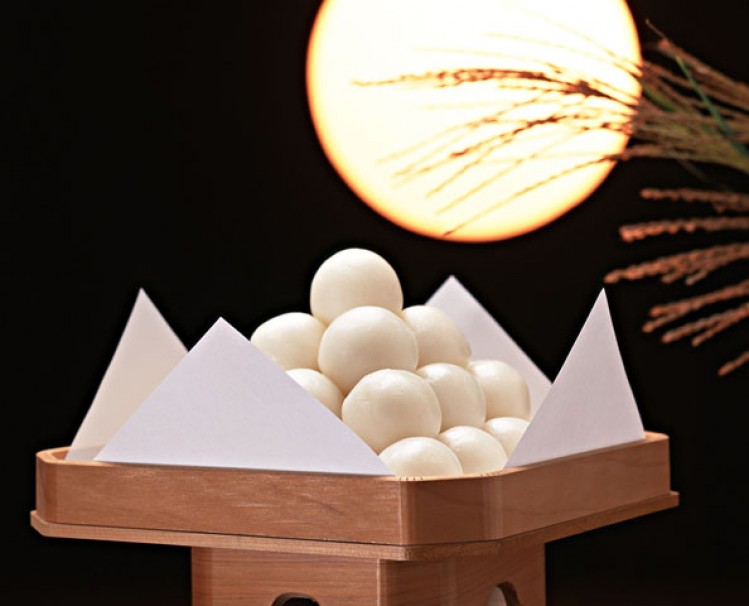
Although Japan no longer uses the lunar calendar, it is still one of the countries that celebrates the Mid-Autumn Festival on the 15th day of the 8th lunar month.
Not moon cakes, but traditional foods often used in Japan during this holiday are sweet potatoes, chestnuts, noodles such as soba, ramen and especially tsukimi dango. Tsukimi dango symbolizes the moon, made from glutinous rice flour and honey with a small round shape. People here also wear traditional costumes and bring offerings to the shrine. At home, they display pampas grass, a symbol of luck and happiness.
Nowadays, the Japanese no longer use the lunar calendar, but they still celebrate the Mid-Autumn Festival with great fanfare. The Japanese watch the moon and eat traditional dishes. They arrange sticky rice cakes on large trays in front of their houses, leisurely watching the moon, chatting and eating. Japanese children also participate in the carp lantern festival.
Thailand
Mid-Autumn Festival in Thailand is called the Moon Festival, held on the 15th day of the 8th lunar month. Thai people attach great importance to this festival, so on the full moon night, everyone will gather around the altar of Bodhisattva Avalokitesvara and the Eight Immortals to pray.

Mid-Autumn Festival in Thailand is called the moon worshiping festival.
The Thai people's offering tray will have peaches and moon cakes to wish longevity to Quan Am as well as the gods. The Thai people's moon cakes are also shaped like peaches, symbolizing fulfillment and reunion according to their beliefs.
Singapore
Mid-Autumn Festival in Singapore is also known as the Lantern Festival or Mooncake Festival. According to the lunar calendar, Mid-Autumn Festival is on the 15th day of the 8th month every year. This is the time when the moon rises high, children will dance and sing while enjoying the moon. The streets on these days are decorated with lanterns and other symbols of the festival.
Singapore is a famous tourist country, the local people never miss the opportunity to attract tourists during this holiday. They decorate Orchard Road – a shopping paradise, the riverside, Chinatown, Chinese Garden and many other places to welcome tourists from all over the world.
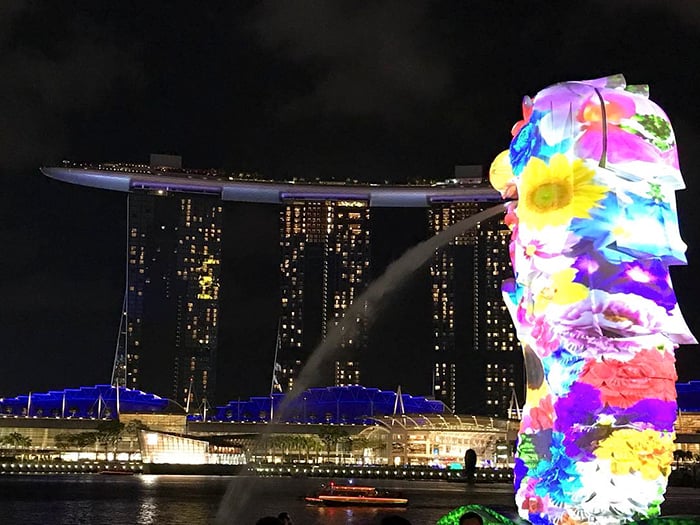
For the people of the Lion Island, Mid-Autumn Festival is a suitable time to socialize, express gratitude and send best wishes to relatives, friends and business partners.
Sengkang Square is considered one of the busiest places to celebrate Mid-Autumn Festival. People gather in large numbers to experience exciting games. And this is also an opportunity for the Chinese community in Singapore to show off their rich and diverse culture in Chinatown.
Cambodia
The Mid-Autumn Festival in Cambodia takes place later on October 15 every year. This festival is called Ok Om Pok, which takes place mainly in the evening. Cambodians also hold lantern-releasing competitions on Mid-Autumn Festival to send prayers and faith to the Moon God.
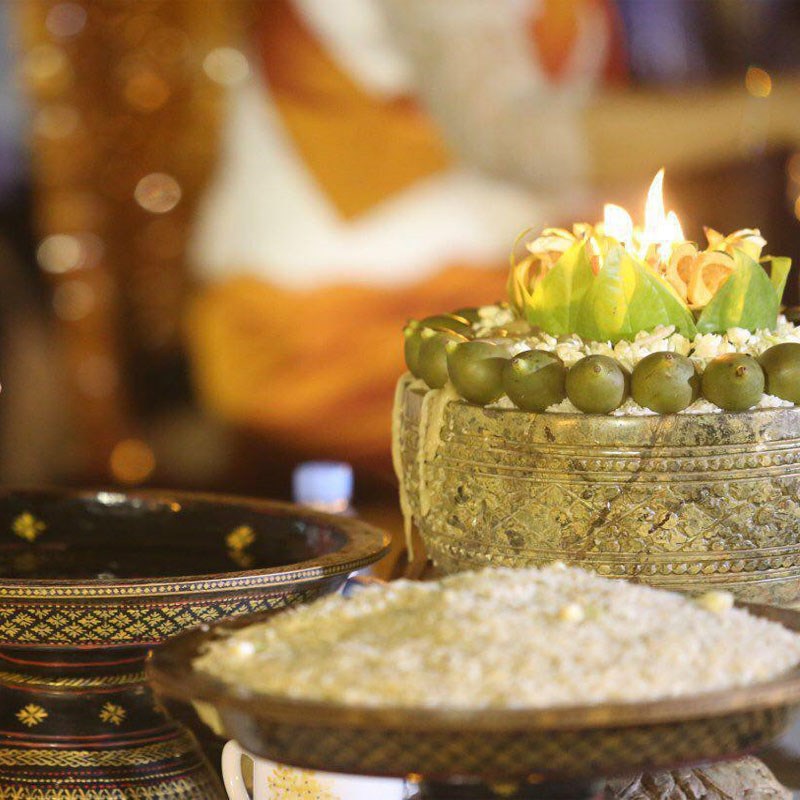
The Mid-Autumn Festival in Cambodia is called Ok Om Pok, which takes place mainly in the evening.
During this festival, in the morning Cambodian people will make offerings of cassava soup, sugarcane juice, and flat rice. In the evening they will make offerings of flat rice, bananas, potatoes, sugarcane, cassava soup, etc.



























